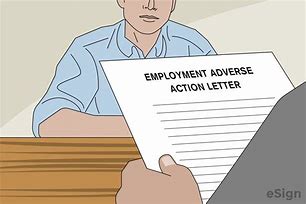Below is a review of the posts (on Facebook, LinkedIn, and X [formerly Twitter]) from the past week. You can check out the full posts by clicking on the links.

The post on Sunday 10/8/2023 showed us precedent is malleable as NLRB revises standard on protected concerted activity. Remember this applies to ALL workplaces (union and non-union). In yet another overturned precedent, in a decision released on August 31st the National Labor Relations Board (“NLRB” or “Board”) redrew the line on when a single person’s individual action could be considered “concerted” and therefore protected under the National Labor Relations Act (“NLRA”). In Miller Plastic Products, Inc., 372 NLRB No. 134 (2023), the Board overruled its 2019 decision in Alstate Maintenance (whose holding is noted in the post). The “new” standard now says that the question of whether an employee has engaged in concerted activity is a factual one based on the totality of the record evidence.
In Miller the issue was whether an individual employee was lawfully terminated after raising concerns about the employer’s COVID protocols and decision to remain open for business during the early months of the pandemic in an all-hands meeting and in other public ways with co-workers and managers.
The basic framework for determining whether employee conduct is protected concerted activity under the NLRA was set out in decisions commonly referred to as Meyers I and Meyers II. In Meyers I, the Board held that an employee’s activity is concerted when it is “engaged in with or on the authority of other employees, and not solely by and on behalf of the employee himself.” What the Board held in Meyers II is in the post. But in both cases the Board cautioned that the announced guidelines were not exhaustive and whether an employee engaged in concerted activity is a factual question based on the totality of the record evidence. But then more context was added to that basic guideline in the 2011 case WorldMark by Wyndham (the relevant background facts of which are noted in the post). The Board’s decision indicated that, in general, concerted activity exists when, in front of coworkers, a single employee protests terms and conditions of employment common to all employees. Then came the 2019 Alstate Maintenance decision which addressed more specifically the kinds of actions that constitute protected concerted activity when they take place in front of other employees. The facts in that case are also noted in the post. On those facts the Board found there was not a group complaint nor an intent to initiate group action. The Alstate Maintenance decision overruled WorldMark by Wyndham.
And now comes Miller Plastic Products which rejected the Alstate Maintenance decision. What the Board said about why it issued this decision is in the post. The Board in Miller Plastic Products ultimately affirmed the ALJ’s decision that the employee’s conduct was concerted under the Meyers II totality of the circumstances test. So what is the practical effect of the Miller Plastic Products decision? It will probably be more difficult for employers to evaluate whether particular actions are or are not protected by the Act. Why? See the post.
TAKEAWAY: whether an employee’s conduct is considered protected activity will depend on whether the employee’s actions can be characterized as concerted based on a review of the “totality of the record evidence,” including all surrounding facts and circumstances. Get legal assistance when facing issues like this.

The post on Monday 10/9/2023 told us a Title VII ruling explains “adverse action”. That, of course, is key to an employee’s discrimination claim. A federal appeals court recently issued a decision on the scope of protection afforded to applicants and employees by Title VII. Together with another employee-friendly Title VII federal appeals court decision the prior month, there is now important guidance for employers on a critically important question: What actions taken by employers can lead to liability for discrimination under Title VII?
This case involved Billie Banks, an African American woman who said her employer subjected her to a hostile work environment, race discrimination, sex discrimination and retaliation. Banks began working as a security officer for General Motors in 1985. After time off from work to earn a master’s degree, she returned in 1996. She was promoted to site safety supervisor in 2006 but was replaced in 2014 while on medical leave. She returned to work in October 2014 and took another medical leave in early 2016. Banks says that beginning in 2002, she was subjected to racially or sexually offensive remarks at work. That included a manager calling her a “dumb n****r” and the other things noted in the post. She also alleged that people she supervised were routinely insubordinate, often ignoring her directives. In early September 2013, Banks went on disability leave to recuperate from work-induced stress (her claimed basis for which is noted in the post). A week later, she filed an internal complaint of race and sex discrimination. See the post for what then happened internally. Banks then filed an EEOC charge of discrimination in October 2013. GM suspended her disability benefits after 10 weeks (contrary to its policy which is described in the post) based on what a psychiatrist it hired to examine Banks said (yes, see the post). Banks appealed the suspension of benefits and they were reinstated. Then in April 2014 Banks told GM she was ready to return to work. There were some machinations (see the post). When she finally returned to work, GM reassigned her to a different position that had no supervisory responsibilities and required her to perform “menial tasks.” Banks sued in November 2014, alleging hostile work environment, race and sex discrimination and retaliation.
The trial court rejected her Title VII disparate treatment claims because if found that neither the reassignment nor the suspension of disability benefits was an “adverse action.” Why that matters is in the post. She appealed. The appellate court vacated the trial court’s decision. On the question at issue, whether Banks had been subjected to an adverse action, it said yes. How the appellate court defined “adverse action” and the test are both in the post (along with the requirement for economic harm).
So why do employers care about this ruling, especially since it does not govern cases in all states? This decision is much broader than the recent ruling by the other federal appellate court on the definition of “adverse action.” And that makes a difference because … see the post. Sometimes it is an easy determination, sometimes not so much. But now more things might fit into the category of “adverse action” and thus lead to more discrimination allegations.
TAKEAWAY: Employees must first experience an adverse action to have a plausible claim of discrimination; defining adverse action is therefore key (to a claim and to an employer’s defense).

The post on Tuesday 10/10/2023 told us Chipotle is to pay $400K to settle EEOC sexual harassment lawsuit. The money will go to three former crew members at a Washington restaurant location and will provide other relief to resolve the suit. The EEOC alleged that Chipotle allowed the three young crew members, including one who was only 17 years old at the time, to be harassed by their 29-year old service manager and subsequently by a 24-year old co-worker. The harassment included the manager sexually assaulting the underaged employee and touching another worker’s buttocks along with the other things noted in the post (and more). The employees reported the sexual harassment to the restaurant’s GMs, but (the EEOC alleged that) Chipotle failed to adequately investigate the complaints and took inadequate remedial measures to stop the sexual harassment. The suit was filed after conciliation failed. The settlement includes a three-year consent decree. Chipotle will pay the $400,000 and appoint an internal consent decree coordinator to so the things listed in the post. Chipotle will provide additional sexual harassment training to employees, supervisors and managers at seven of its Washington restaurants. And there’s more – see the post.
TAKEAWAY: Employers need to have a policy against sexual harassment, respond to and investigate complaints, and take action if warranted. Not doing so can be costly in many ways.

The post on Wednesday 10/11/2023 told us vet says HOA tried to force removal of important symbol from home. John Ackert, who served in the Vietnam War, received a letter from his HOA in July 2017. The letter requested that Ackert remove the American flag wrap on his mailbox within 15 days or he would be fined. Why? See the post. How the HOA justified its request is also in the post. But Ackert said he has had the wrap on his mailbox for years and challenged the HOA by appealing the request. What his neighbors thought about the issue is also in the post. As with most HOAs, members get a binder HOA rules and standards prior to moving in. So what was the outcome of Ackert’s appeal? See the post.
TAKEAWAY: Condo and homeowner associations have various rules and restrictions that residents must abide by; if they don’t, they can be fined. That’s life in a community association.

In the post on Thursday 10/12/2023 we asked: can you seek reimbursement from condo/HOA for increased utility bills during A/C repair? The repairs are being done by the Association. The answer may depend on the rights and responsibilities of both the association and owner in the governing documents. Also keep in mind that association funds for repairs and maintenance come from the residents themselves (assessment monies). While everyone might want the repairs done quickly, that may not be possible for the reasons noted in the post. So if there is a delay involving A/C repair, and the owner has to use portable AC units that significantly increase electricity bills, who is responsible? It may make only a bit of difference in the end. Why? See the post.
TAKEAWAY: Owners and the Board should know each other’s rights and responsibilities when it comes to condo/HOA maintenance; a community association lawyer can also help.

The post on Friday 10/13/2023 was important: what employers can do in a world without non-competes. Unless you’ve had your head stuck in the sand, you know that non-competes are under siege on multiple fronts: state and federal legislatures, the Federal Trade Commission and courts. Because of that, employers must evaluate options to protect their confidential information and trade secrets, as well as their human capital. The FTC has been leading the federal government’s efforts relative to non-competes. The FTC’s January 5, 2023, proposed rule is noted in the post. The FTC has been pursuing enforcement actions, including in the typically less‑scrutinized sale of a business context. Some states have also been banning non-competes. Just in 2023 Minnesota joined California, North Dakota and Oklahoma in banning nearly all non-competes and New York may soon follow. And then there are the courts whose decision ensure that non-competes are drafted narrowly (blue-pencilling at times). So now it may not be a question of whether employers must act, but rather what they must do.
First, employers should consider strengthening non-solicitation provisions in agreements. Appropriately tailor them to the situation – see the post for examples. Next, employers should look carefully at confidentiality agreements. One simple example is in the post (and is basically cost-free!). How that helps in enforcement is noted in the post. Employers also should periodically update and recirculate their confidentiality policies. This is especially important in today’s world of remote and hybrid working arrangements. So in addition to requiring employees to acknowledge and agree to confidentiality policies, what else can employers do? See the post (this author is especially keen on the last suggestion). And when an employee leaves, one consideration should be an audit to confirm that the employee has deleted all business information from his or her personal devices. And there are more things employers can do to “replace” non-competes as noted in the post, some of which are disincentives for competition and others of which are incentives for not jumping ship in the first place. .
TAKEAWAY: Employers want to protect their investment, both in terms of confidential information and human resources, but must do it in such a way as to not violate any (existing or potential) law prohibiting non-competes. Consult an employment lawyer.

Finally, in the post yesterday 10/14/2023, we saw Walmart sued by EEOC for screening out employees with disabilities. The EEOC’s suit alleges that the nation’s largest retailer illegally subjected workers across the country with disabilities to testing as a condition of keeping their jobs. And Walmart allegedly fired employees with disabilities who could not pass the test after three tries even though they were performing their jobs in a satisfactory manner. So let’s look at the (alleged) facts. In 2015 Walmart worked with a third-party entity to establish the “Pathways Training Program,” including a test called the “Pathways Graduation Assessment.” By January 2017, new hourly employees were required to complete the program. The suit highlights the experiences of two Walmart employees in Arkansas who failed the assessment because of their disabilities and were let go regardless of their job performance. What did the EEOC allege about the test? See the post. The suit alleges violation of the ADA and seeks back pay, compensatory and punitive damages, compensation for lost benefits and an injunction against future discrimination. Walmart’s senior manager of global governance communications denied wrongdoing. She explained why Walmart created the Pathways program and one more important thing about the program – see the post.
TAKEAWAY: Employers can impose testing but must make sure the test is job related. Period.

 York, Pennsylvania 17403
York, Pennsylvania 17403